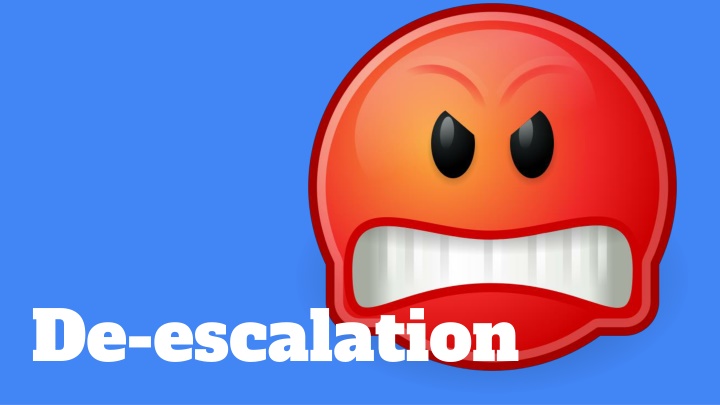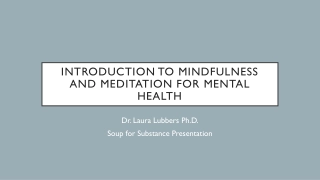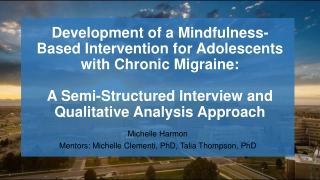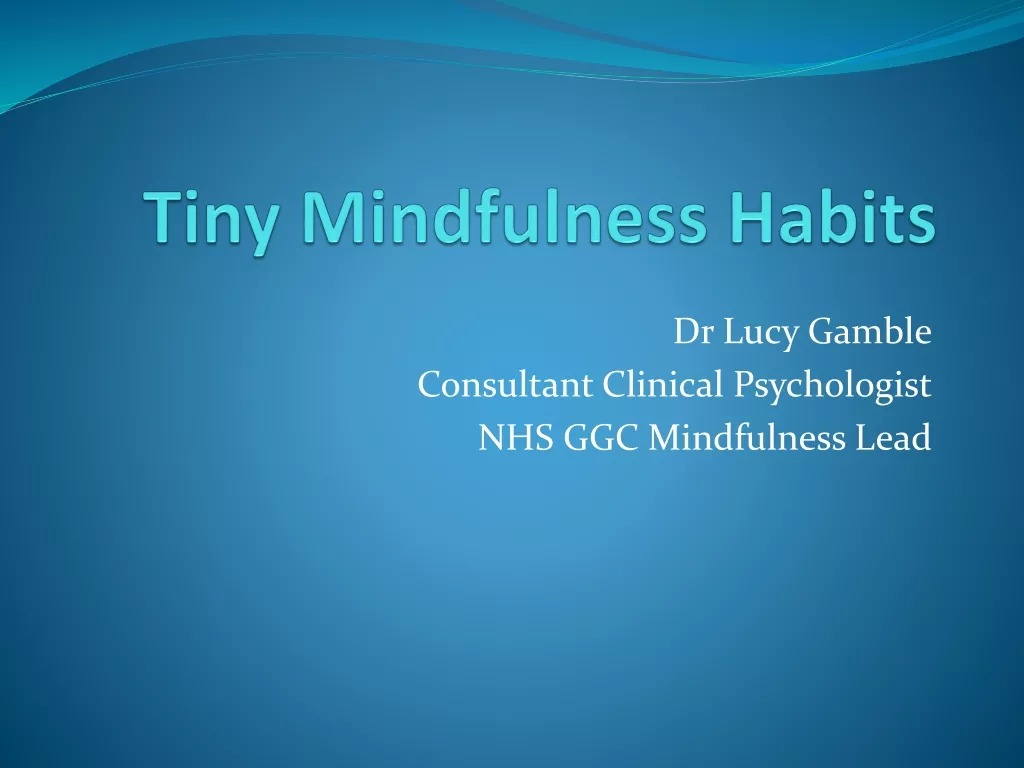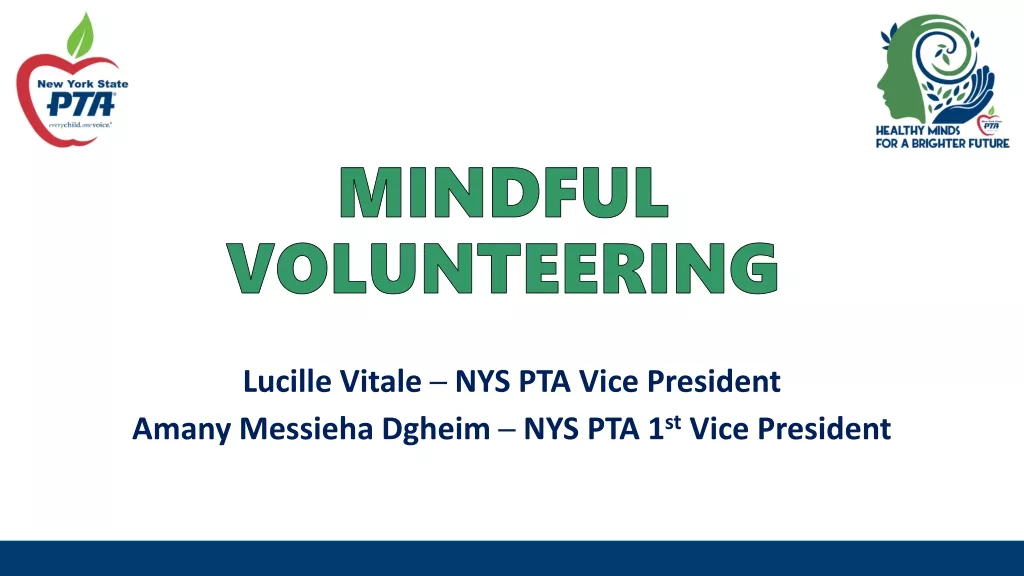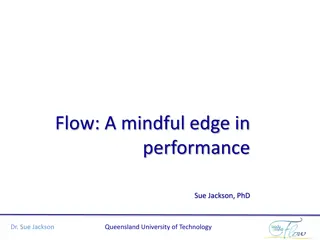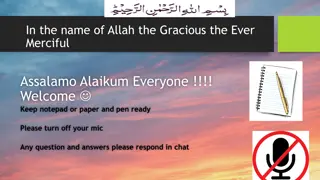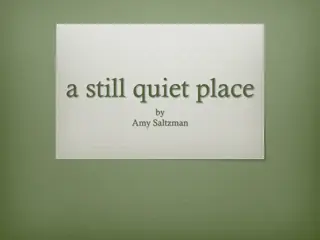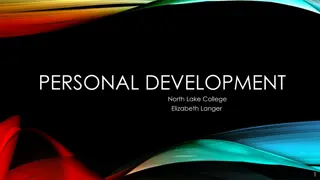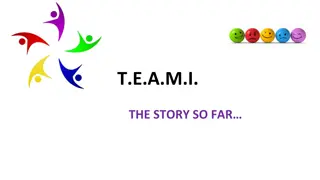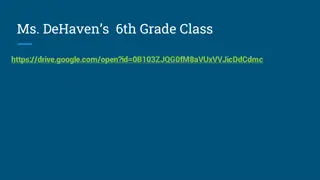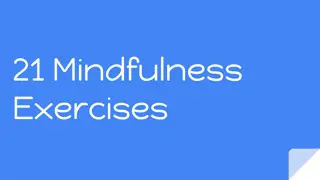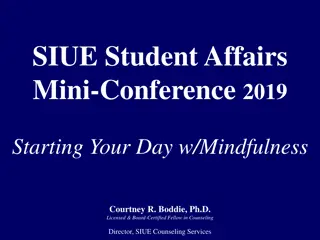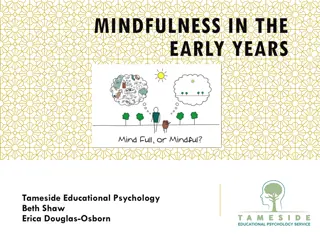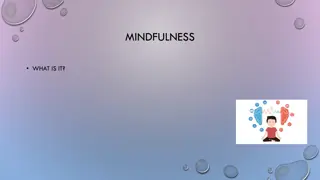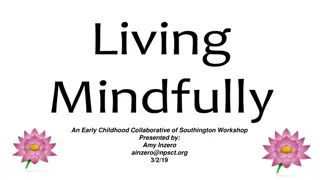De-escalation
De-escalation techniques are essential for handling conflicts with students. Verbal de-escalation can be used across all age groups, focusing on self-monitoring words, tone, and body language. Understanding the conflict cycle and implementing prevention strategies are key. In stressful incidents, recognizing triggers, stages of behavior escalation, and promoting recovery play vital roles. Strategies involve maintaining calmness, providing personal space, and speaking respectfully to students in potential conflict situations.
Download Presentation

Please find below an Image/Link to download the presentation.
The content on the website is provided AS IS for your information and personal use only. It may not be sold, licensed, or shared on other websites without obtaining consent from the author.If you encounter any issues during the download, it is possible that the publisher has removed the file from their server.
You are allowed to download the files provided on this website for personal or commercial use, subject to the condition that they are used lawfully. All files are the property of their respective owners.
The content on the website is provided AS IS for your information and personal use only. It may not be sold, licensed, or shared on other websites without obtaining consent from the author.
E N D
Presentation Transcript
What do you Know? What age groups is de-escalation appropriate for? Verbal de-escalation can (and should) be used with any age group, even adults What is the most important thing to remember when implementing verbal de-escalation? self-monitor your words, tone of voice, and body language. Do not argue or insist on getting the last word How long does it take to see the results of implementing verbal de-escalation? Result are immediate. As the student begins to calm down, the teacher has the opportunity to further de-escalate, offer non-judgmental listening to the student, and use non-confrontational guided questions to help the student recover.
Conflict Cycle stressful incident student s feelings or reaction Your reaction student s observable behavior (or misbehavior) (can serve to perpetuate and even escalate the conflict when using negative criticism, reprimands, threats, and punishment)
1. Calm - The student is relatively calm and cooperative 2. Trigger - The student experiences unresolved conflicts that triggers behavior escalation. 3. Agitation- The student is increasingly unfocused and upset 7 Stages of Behavior Escalation 4. Acceleration - As the conflict remains unresolved, the student focuses on the conflict 5. Peak - The student is out of control and exhibits the most severe behavior 6. De-escalation - Having vented in the Peak stage, the student displays confusion, but the severity of the peak behavior subsides. 7. Recovery - The student often wishes for non- engagement activities such as going somewhere quiet or putting their head down.
Prevention & Understanding Confronting an angry, potentially aggressive student can increase or decrease the potential for problems. Realize that this student may have been dealing with stressful situations earlier in the day or the night before Sometimes an incident may just be the tipping point for a student, rather than the main cause Listen to what the student is saying. Allow the student to utilize supports if they say they need them.
De-escalation Strategies Remove peer spectators or take the student to a private setting Maintain a calm demeanor and steady, level voice, even in the face of intense verbal disrespect or threats Provide adequate personal space Speak softly and slowly step back and try to see the situation from the student s perspective If you don t know the student, introduce yourself and say your position at the school. Speak respectfully Take a nonthreatening stance with your body at an angle to the student and your empty hands at your sides in plain sight. strive to appear calm even if you are upset or anxious avoid use of sarcasm, teasing, reprimands or other negative comments
Make sure the student feels heard. Repeat statements the student says and ask for clarification. Identify points of agreement. - If that happened to me, I would feel that way too. Ask open-ended questions. Acknowledge the student s emotional condition empathetically - You re really angry, and I want to understand why. Keep vocabulary simple and sentences brief to allow the student time to process what you are saying. Set limits - I want you to sit down before we continue. - We can talk, but only if you stop swearing. Reassure the student. - You re not in trouble. - This is your chance to give me your side of the story. - Let s figure out how to take care of this situation in a positive way. - I want to understand why you are upset so that I can know how to help you.
Develop an action plan with the student. -Is the student ready to go back to class? -Does the student need to speak to a counselor or school psychologist? Notify other staff that should know of the incident.
What is Mindfulness ? the intentional cultivation of moment by moment non judgmental focused attention and awareness
Benefits Attention Strengthens our mental muscle . Allows us to focus. Numerous studies show improved attention, including better performance on objective tasks that measure attention. Emotional regulation Helps us know how to respond to emotions. Helps us know why we are having certain emotions. Mindfulness is associated with emotional regulation across a number of studies. Mindfulness creates changes in the brain that correspond to less reactivity, and better ability to engage in tasks even when emotions are activated. Adaptability Helps us become aware of our patterns. Allows us to gradually change for the better.
Compassion Awareness of our own thoughts and emotions. Helps us understand others emotions. People randomly assigned to mindfulness training are more likely to help someone in need and have greater self-compassion. Calming Breathing helps relax body and mind. Allows peace no matter external circumstances. Studies find that mindfulness reduces feelings of stress and improves anxiety and distress when placed in a stressful social situation. Resilience Gives us greater balance by seeing things objectively.
Mindful Breathing 1. Find a relaxed, comfortable position. You could be seated on a chair or on the floor on a cushion. Keep your back upright, but not too tight. Hands resting wherever they re comfortable. Tongue on the roof of your mouth or wherever it s comfortable. Notice and relax your body. Try to notice the shape of your body, its weight. Let yourself relax and become curious about your body seated here the sensations it experiences, the touch, the connection with the floor or the chair. Relax any areas of tightness or tension. Just breathe. Tune into your breath. Feel the natural flow of breath in, out. You don t need to do anything to your breath. Not long, not short, just natural. Notice where you feel your breath in your body. It might be in your abdomen. It may be in your chest or throat or in your nostrils. See if you can feel the sensations of breath, one breath at a time. When one breath ends, the next breath begins. Now as you do this, you might notice that your mind may start to wander. You may start thinking about other things. If this happens, it is not a problem. It's very natural. Just notice that your mind has wandered. You can say thinking or wandering in your head softly. And then gently redirect your attention right back to the breathing. Stay here for five to seven minutes. Notice your breath, in silence. From time to time, you ll get lost in thought, then return to your breath. After a few minutes, once again notice your body, your whole body, seated here. Let yourself relax even more deeply and then offer yourself some appreciation for doing this practice today. 2. 3. 4. 5. 6.
Mindfulness & the Brain Amygdala Aroused when detecting and reacting to emotions, especially difficult or strong emotions such as fear. This part of the brain is less activated and has less gray matter densityfollowing mindfulness. Prefrontal Cortex The part of the brain most associated with maturity, including regulating emotions and behaviors and making wise decisions. This part of the brain is more activated following mindfulness Hippocampus Critical to learning and memory, and helps regulate the amygdala. This part of the brain is more active and has more gray matter density following mindfulness
Mindfulness Activities
Mystery Box Mystery Box Becoming comfortable with not knowing the answer to every question Instead of being uncomfortable with uncertainty, become excited about the mysteries of life Target Ages: Young Children Leading the Game: Let s guess at what is in the mystery box Listen to guesses Talking Points: What does it feel like to not know what s in the box? Excited? Frustrated? Something else? Let children hold the box, feel it, look at it, shake it, but do NOT open the box Let children make more guesses Open box and see what s inside
Mystery Box continued Talking Points How does it feel when you don t know what is going to happen next? Do you like trying new things or would you rather not try something new? What is it like to expect one thing and find another? How do you feel when you have to wait for something (open a present, go to a friend s house, wait your turn to swing)? Other Tips Ideas for box flowers, balloon, paper clips, Legos Have students take turns putting something in the box and having others guess what is in the box
Three Good Things All Ages Do you ever feel disappointed by something or someone? Listen to Stories How did that make you feel? Acknowledge feelings and discuss if needed/appropriate I bet even when you re feeling disappointed there are good things happening in your life, too. Let s name three good things together. Other Tips: Remind children that the point of the game isn t to pretend they re not upset when they feel upset, but rather show children that they can feel two things at once. They can feel grateful for good things when feeling sad, hurt, or disappointed. To develop habits of thankfulness, play the game when student(s) aren t upset Before students are dismissed from school, before lunch At home before bed, during dinner
Ideas for the classroom Calm Down Jar Hershey s kisses Insight timer Nature items Smell jars Picture Books Mindful breathing Hoberman sphere Belly breathing with beanie babies Body scan
Five Senses Daily Log Sight Sound Examples Taste Smell Touch Watched some kids playing in the snow Listened to my favorite song Drank hot chocolate with marshmallows Smelled the Christmas tree Petted my friends dog Monday Tuesday Wednesday Thursday Friday
